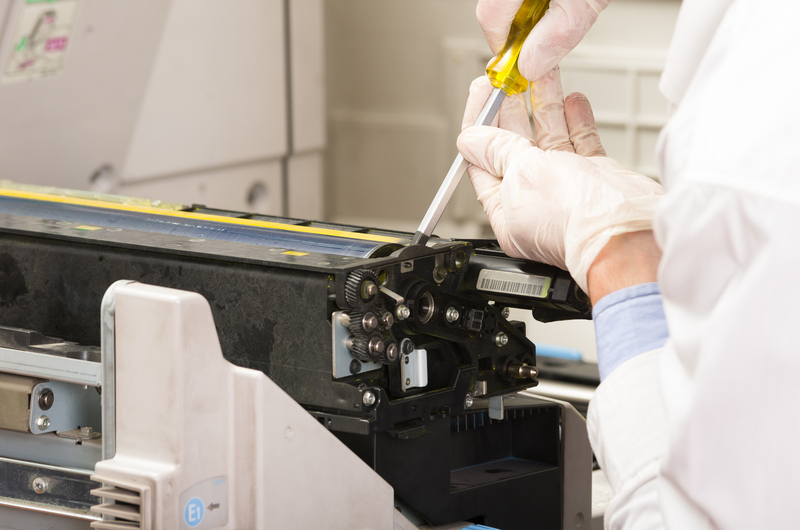Renew and Reuse: Recycling Your Cookware
In today's eco-conscious world, the call to reduce waste and maximize resourcefulness is louder than ever. One household item that often ends up in a landfill, yet offers ample opportunity for renewal and reuse, is cookware. As pots, pans, and bakeware reach the end of their traditional lifespan, understanding how to recycle cookware not only minimizes impact on the environment but can also inspire creative projects and sustainable practices in your home.
Why Renew and Reuse Old Cookware?
It's easy to toss an old frying pan or a dented pot into the bin, but the environmental cost is high. Recycling cookware conserves valuable resources, decreases landfill loads, and reduces the environmental pollutants associated with producing new goods. Furthermore, many cookware materials--such as aluminum, stainless steel, and cast iron--are highly recyclable or can be repurposed in ingenious ways.

What Types of Cookware Can Be Recycled?
Cookware comes in all shapes, sizes, and materials. Knowing what can or can't be recycled is half the battle. Here's a breakdown:
- Aluminum Pans: Highly recyclable; check for non-stick coatings which may need to be removed.
- Stainless Steel Pots: Widely accepted at scrap metal yards.
- Cast Iron Skillets: Can last a lifetime, but when unusable, they are recyclable as scrap metal.
- Copper Cookware: Highly valued at metal scrapyards.
- Teflon (PTFE) and Non-Stick Pans: Tricky to recycle due to coatings, but some specialized facilities accept them.
- Ceramic and Glass Bakeware: Not typically recycled with regular glass; look for specialty recycling options.
How to Recycle Old Pots and Pans: A Step-by-Step Guide
1. Assess the Condition of Your Cookware
Is your cookware truly at the end of its life? Sometimes, a little TLC can revive a pan or pot. Cast iron, for instance, can often be renewed with re-seasoning. Handles, knobs, or non-stick coatings can sometimes be replaced or repaired. If refurbishing isn't an option, move on to recycling steps.
2. Prepare Your Cookware for Recycling
*Remove any non-metal parts*, such as plastic handles or rubberized grips. Unscrew or cut them off if possible, as pure metal is preferable for scrap yards. If your pan has a non-stick coating, check if it needs special handling--non-stick surfaces may require separation.
3. Find the Right Recycling Facility
Recycling options vary by location and material:
- Municipal Recycling Centers: Some accept metal cookware in curbside bins (check local rules).
- Scrap Metal Yards: Usually happy to take metal pots and pans, and may even pay for aluminum, copper, or stainless steel.
- Specialty Recycling Programs: Search for programs or businesses that accept non-stick pans or ceramics. The Earth911 website is a good resource for finding recycling locations by ZIP code.
4. Consider Donating Usable Cookware
If your cookware is still functional, even with cosmetic flaws, consider donating to:
- Thrift stores or charity shops
- Community centers or shelters
- Friends, family, or college students
*Donating prolongs the cookware's life* and benefits someone in need while keeping items out of landfills.
Creative Ways to Reuse and Upcycle Old Cookware
Not all used pots and pans need to be melted down! Many can be transformed into useful or decorative household items. Here are some creative, eco-friendly projects:
Garden Projects
- Planters: Old colanders, teapots, or deep pans make excellent plant containers, providing natural drainage.
- Bird Feeders: Turn an old frying pan or pot into a unique bird feeder for your yard.
Home Decor Ideas
- Wall Art: Paint or decorate vintage pans for kitchen wall displays.
- Clocks: Convert circular pan bottoms into funky wall clocks.
- Light Fixtures: Suspended upside-down colanders or pans can be turned into industrial-chic pendant lights.
Garage and Workshop Uses
- Storage Bins: Use large pots for organizing garden tools, paintbrushes, or hardware.
- Paint Mixing: Old pans are great mixing trays for DIY projects (just avoid food use afterwards).
Common Questions About Recycling Cookware
Can I Recycle Non-Stick Pans?
Non-stick cookware can be challenging to recycle because of the PTFE (Teflon) coatings, which are not always accepted by standard scrap yards. Some specialized recycling centers, however, handle non-stick pans. If unavailable, consider upcycling your non-stick pans instead.
How Much Is Scrap Metal From Cookware Worth?
The price varies by metal and weight. Aluminum, stainless steel, and copper are the most valuable. You might not make a fortune, but recycling metal cookware not only contributes to environmental preservation but could also yield a small profit.
Are Ceramic and Glass Dishes Recyclable?
Traditional curbside recycling generally does NOT accept ceramics or oven-safe glass (like Pyrex) due to different melting points. Look for artists, hobbyists, or specialized facilities who may repurpose or recycle these items.
Benefits of Renewing and Reusing Cookware
- Reduces landfill waste--Cookware can take decades or centuries to decompose in landfills.
- Conserves resources--Recycling metals uses less energy than mining and producing new ones.
- Saves money--Upcycling items around the house minimizes the need to purchase new containers or decor.
- Encourages creativity--Crafting with old cookware can be a fun, rewarding activity for families or individuals.
Maintaining Your Cookware for Longer Life
Before thinking about recycling, remember that proper maintenance can dramatically extend the lifespan of your cookware. Here are some tips to keep your pots and pans in top shape:
- Hand wash when possible, especially for non-stick and cast iron.
- Season cast iron regularly to prevent rust and build-up.
- Avoid metal utensils on non-stick surfaces to reduce scratching.
- Store with care--stack pans with felt or paper between to prevent dings and scratches.
The better you care for your cookware, the less often you'll need to seek renewal or recycling.
Eco-Friendly Alternatives When Buying New Cookware
When it's time to replace your old pots and pans, consider these sustainable cookware choices:
- Buy recycled-material cookware made from post-consumer metals.
- Choose items with recyclable or compostable packaging.
- Support brands with take-back or recycling programs (some brands will even collect your old cookware when you buy new).
- Consider items that are designed to last and can be easily refurbished or restored.
Key Takeaways: Making the Most of Your Old Cookware
- Don't throw old cookware in the trash! Explore donation, recycling, or creative reuse first.
- Match your cookware to the correct recycling stream: metals, ceramics, and non-stick require different methods.
- Get creative--turn worn-out pots, pans, or bakeware into planters, storage bins, or decor.
- When shopping for new cookware, put sustainability front and center.

Resources for Cookware Renewal and Recycling
- Earth911.com - Find recycling locations near you.
- ScrapMonster.com - Market prices for scrap metal & recycling centers.
- Freecycle.org - Find people who want to reuse your old items.
- Local community groups (Facebook Marketplace, Buy Nothing Groups, Craigslist)
The Future of Cookware Sustainability
The push for greener kitchens is accelerating. More manufacturers are embracing sustainable materials, and recycling technology is catching up with composite and coated cookware. By renewing, reusing, and recycling your cookware, you play an active part in this eco-conscious evolution--making your kitchen not just a place for sustenance, but for sustainability.
Embrace the cycle: Renew, Reuse, and Recycle your cookware for a cleaner, greener, and more creative kitchen!